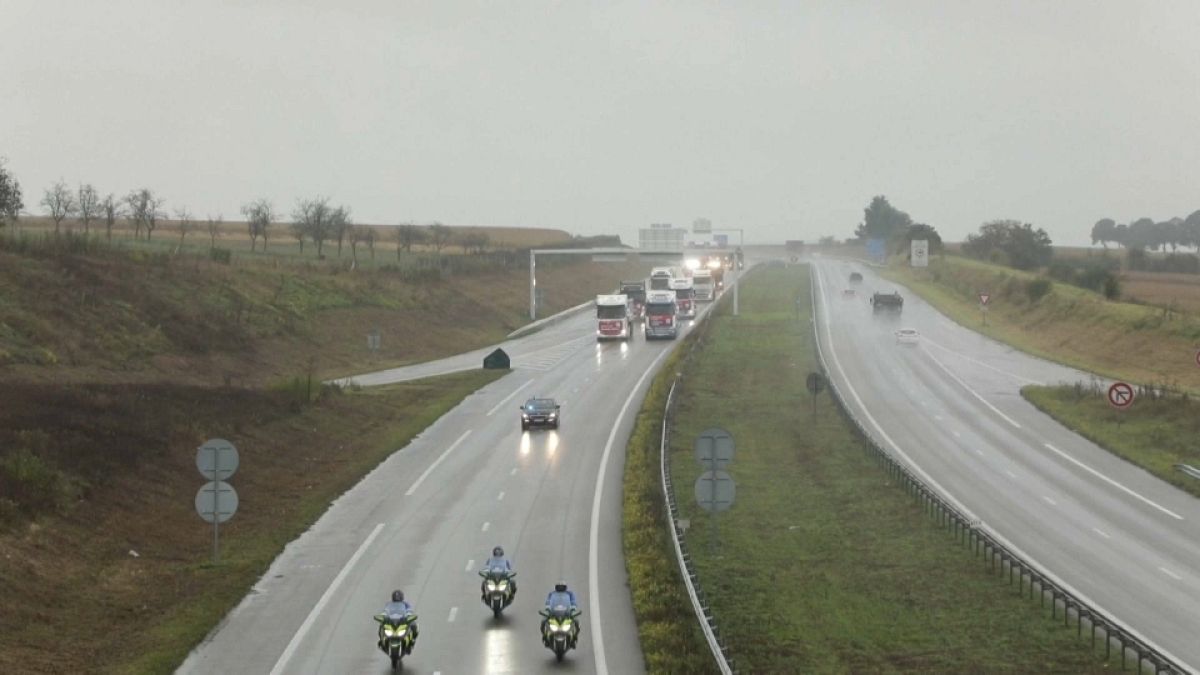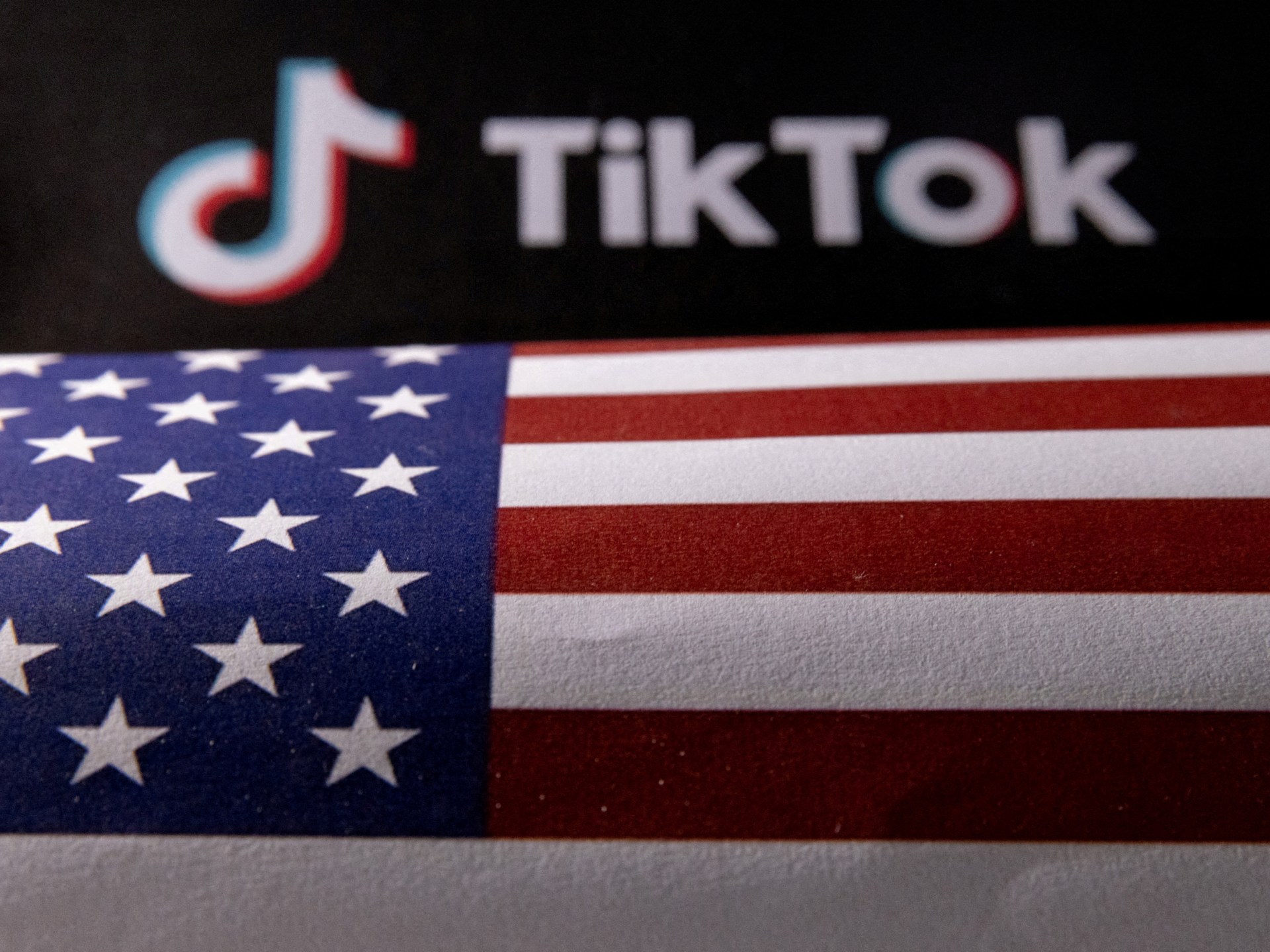Lifestyle
Ethel Kennedy Hospitalized After Suffering Stroke, Family Announces
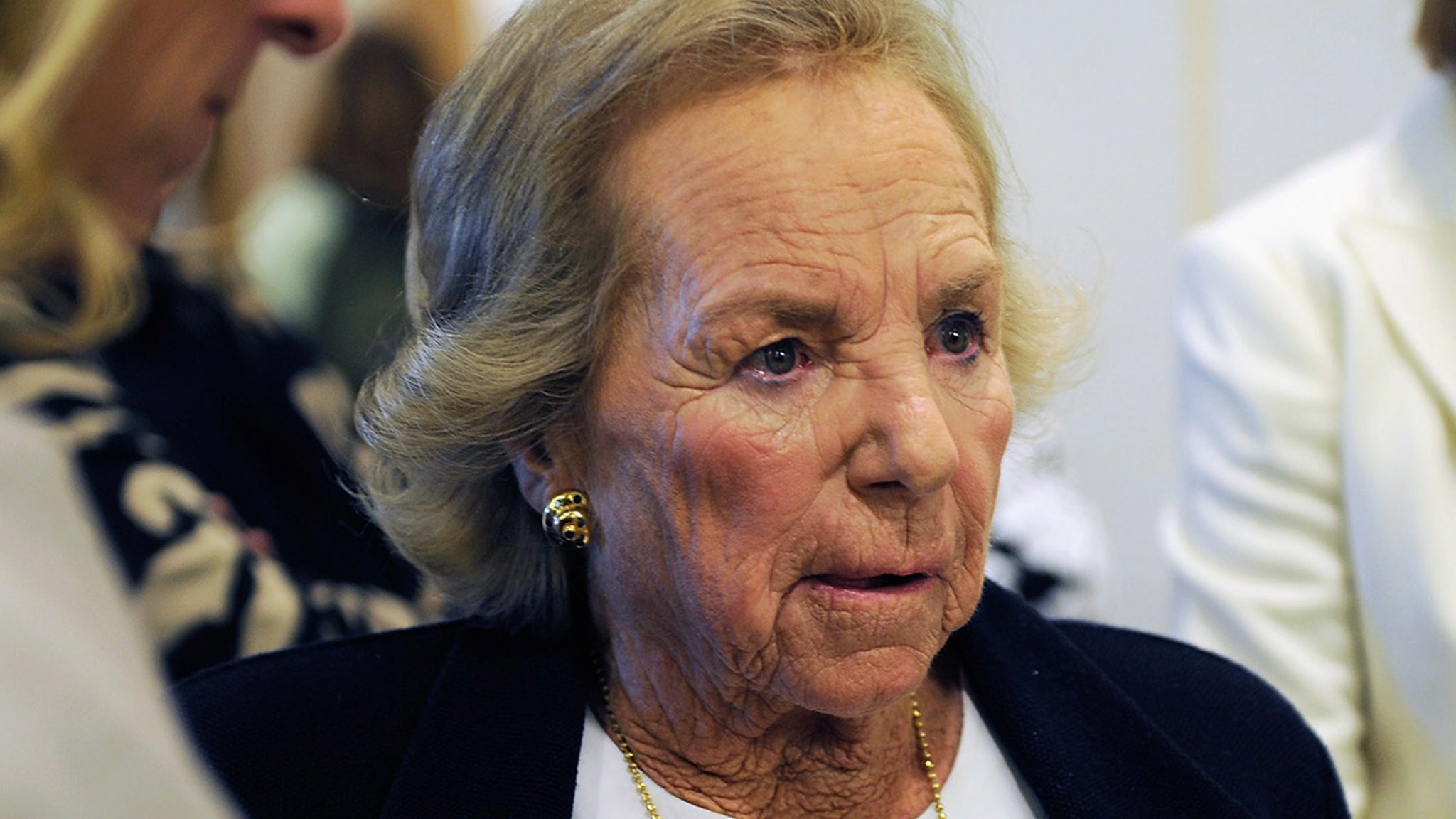
Ethel Kennedy, the widow of Robert F. Kennedy Sr., is in a hospital recovering from a stroke … the famous family announced.
Ethel suffered the stroke in her sleep last Thursday and was taken to a hospital, where she’s getting care and is surrounded by family … according to a statement Tuesday from Joe Kennedy III.
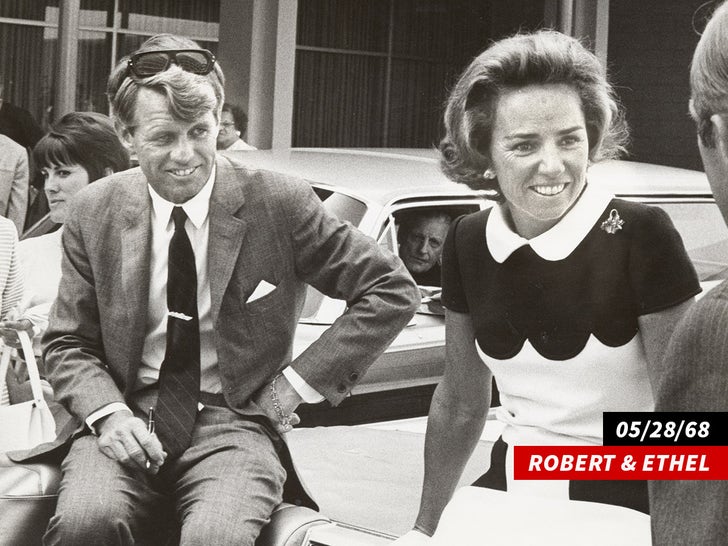
The Kennedys say Ethel is “comfortable” … but they are asking for thoughts and prayers.
Sharing some news about one of my heroes. pic.twitter.com/kcSqSNfabC
— Joe Kennedy III (@joekennedy) October 8, 2024
@joekennedy
The 96-year-old enjoyed a great summer and start of fall, spending time with her children, nieces, nephews, grandchildren and great-grandkids, getting out on the water and going out to eat in the weeks and months before suffering the stroke … the family says.
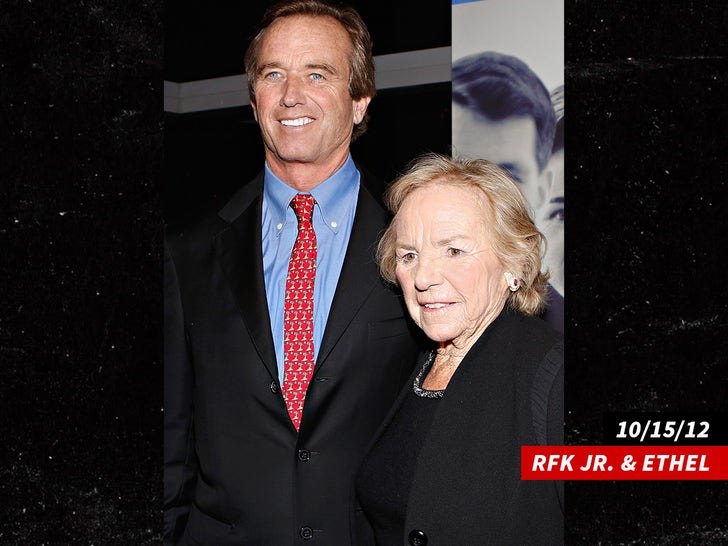
Ethel has 11 kids, including Kathleen, Joe and Robert F. Kennedy Jr. … and she’s the sister-in-law of former President John F. Kennedy.
She was pregnant when RFK was assassinated while running for president in 1968 and never remarried.
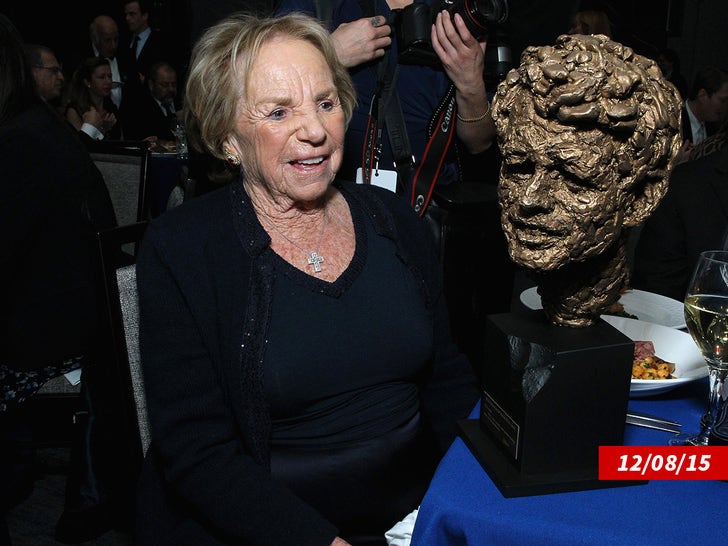
A year after RFK’s assassination, Ethel founded the Robert F. Kennedy Human Rights nonprofit in his honor.
Ethel is also a recipient of the Congressional Medal of Freedom … she was presented with the nation’s highest honor for a civilian back in 2014, when Barack Obama was President.

Lifestyle
'Fresh Kill' imagined a contaminated city. 30 years later it feels spot-on

A scene from the 1994 experimental film Fresh Kill.
Lona Foote
hide caption
toggle caption
Lona Foote
Filmmaker Shu Lea Cheang, 70, had been on the road for about two weeks of a month-long road trip across the United States when she met a reporter in Ann Arbor before a screening of her 1994 experimental film Fresh Kill.
“When the film first came out, many people didn’t quite get it,” Cheang said. She wore bright orange trousers and her white hair was cropped close to her scalp.
Fresh Kill is neither a horror movie nor a documentary. It’s an experimental film, taking its name from the Fresh Kills landfill on Staten Island that, at its peak, took in about 29,000 tons of garbage every day. The ginormous landfill is now a park.
The film has aged well. Its surreal, sci-fi inflected story of pollution and environmental inequality feels prescient, and the film’s vision of a contaminated city is scathing, funny and surreal. Characters include concerned lesbian moms, eco-terrorists and wealthy business bros who snack on sushi that turns their skin glowing green.
From New York to Paris
Shu Lea Cheang is a leading new media and multimedia artist, who’s exhibited at museums all over the country, including the Whitney Museum of American Art in New York and the Walker Art Center in Minneapolis. She was the first to create a web-based artwork for the Guggenheim Museum and won this year’s LG Guggenheim Award.

Cheang joined New York’s vibrant downtown theater scene in the 1980s after moving there from Taiwan. Fresh Kill is filled with many of its faces, including George C. Wolfe (former artistic director of the Public Theater), and National Book Award finalist Jessica Hagedorn, who also wrote Fresh Kill’s screenplay. The soundtrack is by Vernon Reid, who founded the band Living Colour. New York rents have priced out Cheang, who now lives in Paris though she has been for decades an American citizen.
A film restored
New York University, which holds Cheang’s archives, recently restored the original 35mm film.
That’s when Cheang decided to take her film on a road trip, to be screened across the country. “I wrote to every cinema that had 35mm projection capacity,” she said. “So romantic, right?”
Jazz Jones, who is one of two young filmmakers traveling with Cheang, met her last year at a Florida film festival where he first saw her one of her movies.

“I was just like, this is freaking insane. I have to talk to this woman,” he recalled. “And she starts talking about this trip and I’m like, ‘Can I be your driver?’”
Jean-Paul Jones, who is also accompanying Cheang, is a projectionist in addition to being a filmmaker, a useful skill on a trip when the film print is handed off and inspected at 21 theaters in 33 days. The theaters that have the capacity to screen the film tend to be among the most beautiful and eclectic in the country, including Chicago’s Music Box Theatre, the Harris Theater in Pittsburgh and Cine Athens in Georgia.
As they travel, Jones and Franklin are filming their own documentary about the experience, which so far has included stops in Flint, Mich., to discuss the water crisis with people who live there, and a detour for lunch at a Haitian restaurant in Springfield, Ohio.

Lifestyle
Pharrell wanted to tell his story through Legos — here's why

Pharrell Williams tells the story of his life in Piece By Piece
Courtesy of Focus Features
hide caption
toggle caption
Courtesy of Focus Features
Though it may seem like a strange choice on the surface, it felt natural for the musician Pharrell Williams to tell his life story through Legos. “My earliest memories were the Lego sets that my parents would get me when I was really, really, really young,” he says. “Whether you actually really build what the set is all about or you’re just putting pieces together … it’s just magical.”
As a kid, Pharrell lived in the Atlantis Apartments, a densely populated public housing complex in Virginia Beach, Va. Outsiders were afraid to go into his neighborhood, but for Pharrell, the place was special, teeming with talent and fun.
“There were a lot of athletes that were incredibly gifted, a lot of artists that were incredibly gifted,” he says. “You know, you talk about carbon? … That heat, that pressure, that time produced a lot of diamonds.”
The new animated film, Piece By Piece, uses Legos to trace Pharrell’s early life as a boy fueled by creativity and drawn to music. Directed by Academy Award-winner Morgan Neville, the unusual biopic charts Pharrell’s trajectory to becoming a Grammy-winning songwriter, performer and producer who’s collaborated with artists like Jay-Z, Snoop Dogg, Britney Spears and Beyoncé. Perhaps a story as colorful as his can only be told in such a flamboyant way.
Interview highlights
On his synesthesia, which causes him to see color when he hears music
If you take it back to when you were born, all of your nerve endings — sight, sound, smell, taste, feeling — they were all connected. And then when you turn 1, those nerve endings, they prune. And sometimes some of them stay connected. And the ones that stay connected give you synesthesia. And when they’re connected, they send ghost images and ghost information to the different parts of the brain. And so you end up “hearing” a color or “seeing” a sound.
YouTube
On writing “Milkshake,” sung by Kelis
The shapes [I see] are hard for me to explain, but it sort of zig zags. And those synth lines are yellow and brown for me. … And the yellow it goes from bright to mustard, marigold, and then there is just very stark brown. …
That song came from a trip that I went to in Brazil, and I just, like, lost my mind. I’d never seen so many beautiful women. They were just everywhere. And forgive the objectification, when I say that. But that was the impression that it made on my mind at that time, I don’t know, 20 years ago. … I’d never seen anything like that. Where am I? And if you could put that energy and feeling if that could be sort of transmuted [into a song]… that was the attempt.
On writing a song for Prince that he rejected
He was different. He was one of those people that, like, he’s a musical savant. There’s not an instrument he couldn’t pick up and play. He’s a brilliant writer. Vocally, he’s incredible. He was an incredible performer and he wrote and produced for so many people. … [He was] like, “Do you own or your masters? If you don’t own your masters, we can’t work together.” … I never heard anyone say that before. Then his other thing was he wanted to sort of talk about religion. And I was like, interesting. And now I do own all of my master recordings. And I’d be happy to square off in a conversation about the business of religion versus the necessity of faith.
On his falsetto singing voice
I had a problem with my voice for many, many, many years because I didn’t feel like I had found my voice. I always thought that my tone sounded like Mickey Mouse. The next time you listen to “Frontin’,” picture Mickey Mouse — you can’t unsee it.
YouTube
On writing “Happy”
The song is a sarcastic answer … for a rhetorical question: How do you make a song about someone so happy that nothing can bring them down? … When Despicable Me 2 came out [the studio] couldn’t get it to work [on the] radio because it was alien. It didn’t sound like anything else. … [Radio] didn’t play it until we did the video six months later, when the song was included on a DVD … and there was a budget to do a video for the song. Since we loved it as a companion piece to sell the DVD.
On why being in water helps him write music
When you’re in the shower, you know, and the water’s just consistently running and it creates an effect of white noise. And that’s the reason why you can think clearly when you shower. … Ideas come. Or sometimes people sing in the shower – that’s the reason why they do it is because that consistent noise, that white noise is particularly freeing to the part of your mind that wants to just iterate and not be environmentally distracted. So running water, being near water, being in water, a bath, a pool, seeing the ocean, standing in the shower, washing my hands in the sink. It does it for me.
Ann Marie Baldonado and Susan Nyakundi produced and edited this interview for broadcast. Bridget Bentz, Molly Seavy-Nesper and Sheldon Pearce adapted it for the web.
Lifestyle
Moncler CEO Outlines Latest ‘Genius’ Strategy

-
/cdn.vox-cdn.com/uploads/chorus_asset/file/25439572/VRG_TEC_Textless.jpg)
/cdn.vox-cdn.com/uploads/chorus_asset/file/25439572/VRG_TEC_Textless.jpg) Technology6 days ago
Technology6 days agoCharter will offer Peacock for free with some cable subscriptions next year
-

 World5 days ago
World5 days agoUkrainian stronghold Vuhledar falls to Russian offensive after two years of bombardment
-

 World6 days ago
World6 days agoWikiLeaks’ Julian Assange says he pleaded ‘guilty to journalism’ in order to be freed
-

 Technology5 days ago
Technology5 days agoBeware of fraudsters posing as government officials trying to steal your cash
-

 Health4 days ago
Health4 days agoHealth, happiness and helping others are vital parts of free and responsible society, Founding Fathers taught
-

 Virginia1 week ago
Virginia1 week agoStatus for Daniels and Green still uncertain for this week against Virginia Tech; Reuben done for season
-

 Sports4 days ago
Sports4 days agoFreddie Freeman says his ankle sprain is worst injury he's ever tried to play through
-

 News4 days ago
News4 days agoLebanon says 50 medics killed in past three days as Israel extends its bombardment











